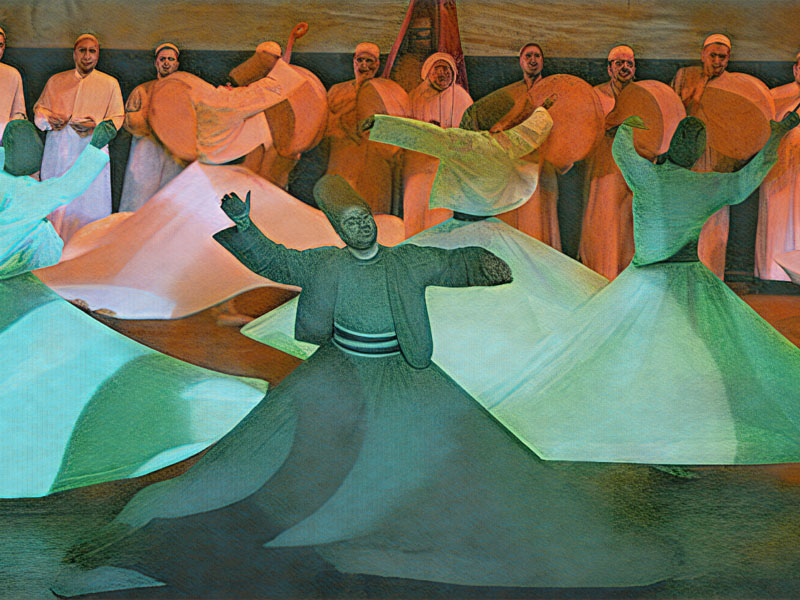The secrets of the Tannoura, a traditional dance
Issue 16

Mohamed Abdelhamid Fayid (Egypt)
Egyptian traditional dance reflects multiple aspects of culture, so traditional dance must be evaluated aesthetically and functionally while taking its social role into consideration. Over time, the dance developed into an immense creative heritage that includes ceaseless, coordinated steps.
The dance combines a creative performance with elaborate costumes, songs and traditional musical instruments. One of the most popular dances, Tannoura is an expression of a profound philosophical concept; Tannoura stands out at most local and international celebrations and festivals because it requires special skills.
Originally a Turkish Sufi dance, Tannoura has always been associated with Dervish whirling. Renowned Sufi poet Jalal Al Din Al Rumi (1207-1273AH) is credited with creating the dance. Egyptians began performing the dance at the beginning of the Fatimid era, and Tannoura developed into a performance that includes music, poetry, choreography, costumes and special musical instruments.
Tannoura depends on the dancers’ ability to whirl continuously until they enter a trance. The whirling symbolizes the circle of life, and the dancers use their bodies to transcend the physical world.
The dance is distinguished by costumes in colors that represent Egyptian society. The dance has recently changed to include modern music and fast rhythms. An English director introduced the lanterns that hang off the dancers’ skirts. Tannoura dancers must be talented, physically fit and able to dance in the skirts. Dancing with the big lantern is challenging and requires constant practice, good nutrition and special skills; female dancers have begun to dance with the big lantern. Nowadays, both men and women can learn to dance the Tannoura.
Tannoura performers are both dancers and musicians. Famous Tannoura troupes, such as the Egyptian traditional troupe and the Ridah troupe for traditional arts, perform at local and international festivals. Tannoura troupes have also collaborated with Indian dancers to perform an Egyptian Tannoura to Indian rhythms for an Indian audience. Tannoura has also proved popular with the British, with a Tannoura troupe outperforming 27 other troupes of performers - including African, European and American troupes - at a festival. The Sinbad of Tannoura, the Legend of Tannoura and many other skilled dancers have contributed to the art of Tannoura. El-Ghouri Palace for Traditional Culture has trained three generations of Tannoura dancers.
There are troupes and cultural centers that offer Tannoura classes, but some dancers hope to establish a specialized institute for Tannoura training in an effort to preserve this valuable traditional art.
Tannoura has inspired a number of directors, resulting in films such as the documentary Al Lafif (The Group) and the feature film Alwan Al Sama’ Al Sabah (The Seven Colors of Heaven). These films, which promoted awareness about Tannoura, were well received by audiences and critics; the Egyptians are familiar with the Tannoura, which is performed throughout Egypt at festivals, weddings and mawlid, which are celebrations of the birth of the Prophet (MPBUH).
Whatever the original philosophy behind Tannoura, the Egyptian people have added special characteristics such as diverse dance rhythms. Tannoura songs reflect Islamic values such as peace, friendship, wisdom and man’s relationship to life and the Universe.
The vocalist plays an indispensible role in the Tannoura and can be considered the spirit of the performance. In addition to Tannoura’s original connection to Sufism and its rituals, it is an important part of all celebrations, and increasingly popular among young people. Tannoura adds atmosphere, bringing joy and aesthetic value with its transcendent whirling.



































































